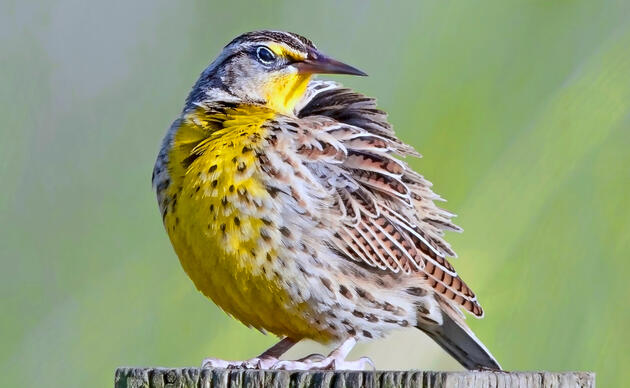During World War II, victory gardens were a novel solution to food shortages, as resources were diverted to the war effort. Although they are not likely to be called victory gardens nowadays, Americans are increasingly looking to the past for solutions to the catastrophic issues of our own time. Social media is filled with content about growing your own food, composting food waste, reducing use of single-use plastics, thrifting clothes, and generally consuming long-lasting goods rather than cheap trendy items that will end up in the garbage – all of which could be considered “old school,” the kind of thing your parents and grandparents grew up doing.
On a much larger scale, natural climate solutions are gaining traction as a cost- effective way to decrease greenhouse gas pollution. After all, the simplest solution is just to leave natural areas as they are. The second most effective solution is to restore places that have been polluted or damaged. Although there is a lot of hype around ‘carbon capture and storage,’ filtering carbon out of the atmosphere directly, the technology is not affordable on a large scale. Nature’s chemistry is still more potent.
In 2017, The Nature Conservancy released research with multiple academic partners finding that “Natural climate solutions can provide up to 37% of the emission reductions needed by 2030 to keep global temperature increases under 2 degrees Celsius. Additionally, using only cost-effective solutions [costing less than the future impacts of climate change, expected to cost more than $100 per ton of CO2 in the atmosphere], nature's mitigation potential is estimated at 11.3 billion tons in 2030—the equivalent of stopping burning oil globally.” (Natural climate solutions. Griscom, et al. 2017. PNAS. Vol. 114, No. 44.)
The carbon cycle and grasslands
Carbon sinks are ecosystems that absorb more carbon than they produce. Most natural spaces are carbon sinks, but some are much more effective than others. Plant life absorbs carbon dioxide from the air, pushes carbon down into the soil through its roots, and releases oxygen. Decomposing plants and animal waste provide more carbon and nitrogen to soil microbes. Prairie native grasses and forbs have extremely deep root systems that can carry carbon meters down into the soil. More carbon is more food for microorganisms, which enriches the soil and strengthens plant life. Carbon rich soil also holds more water, making lands more resilient to floods and drought.
When we build on grasslands, the carbon stored in the soil is released into the atmosphere. Audubon’s 2021 Natural Climate Solution Report found that grassland development releases more carbon than any other ecosystem. Preventing the disruption of the soil keeps carbon in the ground, so the most effective way we can mitigate carbon levels is to protect those ecosystems from development. Of course, the second most effective way is to expand their footprint and restore areas that have been disrupted.
In the US, forests sequester more carbon than any other ecosystem, but native grasslands and river wetlands have undeniable potential, because there is so much grazing land: in 2017, the USDA estimated that grassland pasture and range covered 29% of all land in the US. Forests are becoming more vulnerable to fires and droughts, while grasslands are far more resilient because they simply take less water and less time to regrow.
Soil health and agriculture
Land in our three states is almost entirely privately-owned, so political leadership must take advantage of public-private partnerships that support agricultural and rural communities. Privately protected land, such as Audubon’s centers and sanctuaries, have a big role to play. Market-based initiatives like Audubon’s Conservation Ranching Program and North Dakota’s Conservation Forage Program are particularly important in these ecosystems, finding ways to multiply the benefits to the land and communities. The Conservation Ranching Initiative provides landowners with cost-share funding to implement bird-friendly management, protecting our grasslands and keeping ranches financially sustainable. Since 2009, we have enrolled 23 ranches totaling over 140,000 acres in the Great Plains alone.
Earlier this year, Audubon Great Plains participated in Nebraska’s workgroups for a state climate action plan. The Priority Climate Action Plan (PCAP) focused on immediate steps: expanding climate-resilient agricultural practices, promoting soil health, adapting the power grid, and investing in renewable energy innovation.
Natural solutions considered by the PCAP included financial incentives for precision agricultural equipment, reduced tillage, cover crops, and nitrogen management, as well as incentives for biochar to reduce organic waste and sequester carbon in soil. The Nebraska PCAP did not include any proposals for restoring critical landscapes, but Audubon Great Plains will be represented in the next phase of planning and will prioritize both large-scale conservation and urban natural climate solutions. North Dakota is also developing a state climate plan, but has so far had only public comment meetings. South Dakota was one of five states that declined federal IRA funding for CAPs and grants.
The caveat to all of this: decreasing our own carbon footprints may be the key to simpler living, but doing that alone will not protect what we’re at risk of losing. We will still need a rapid transition to renewable energy and more strict regulations against pollution. But the more conservation and restoration we do, the less disruptive that transition will be. The cost-benefit analysis could not be more clear.




